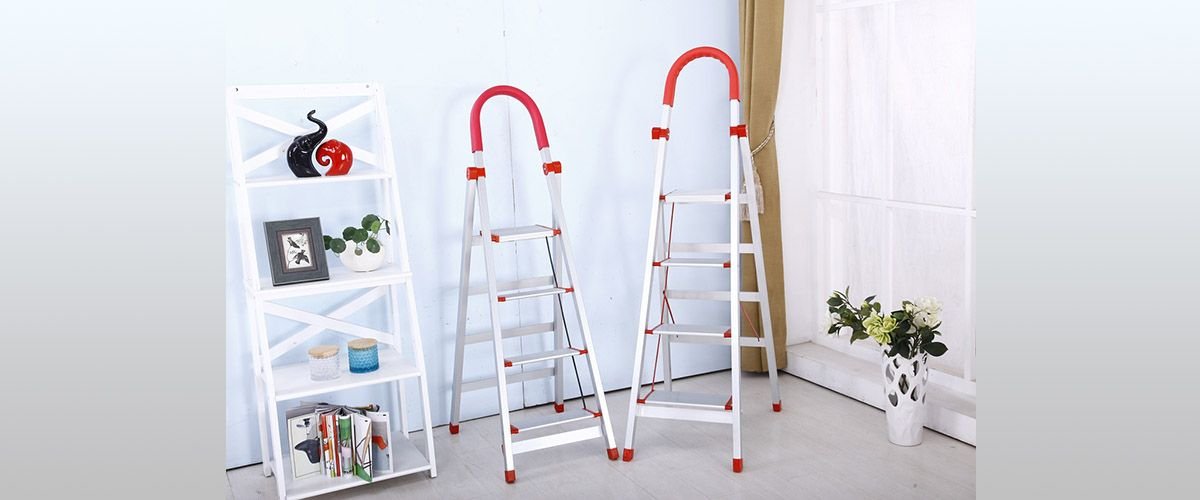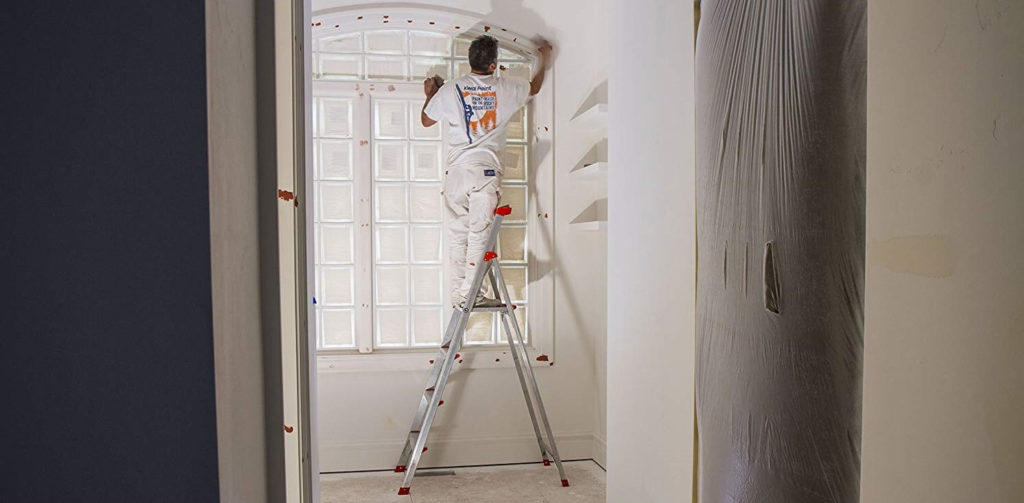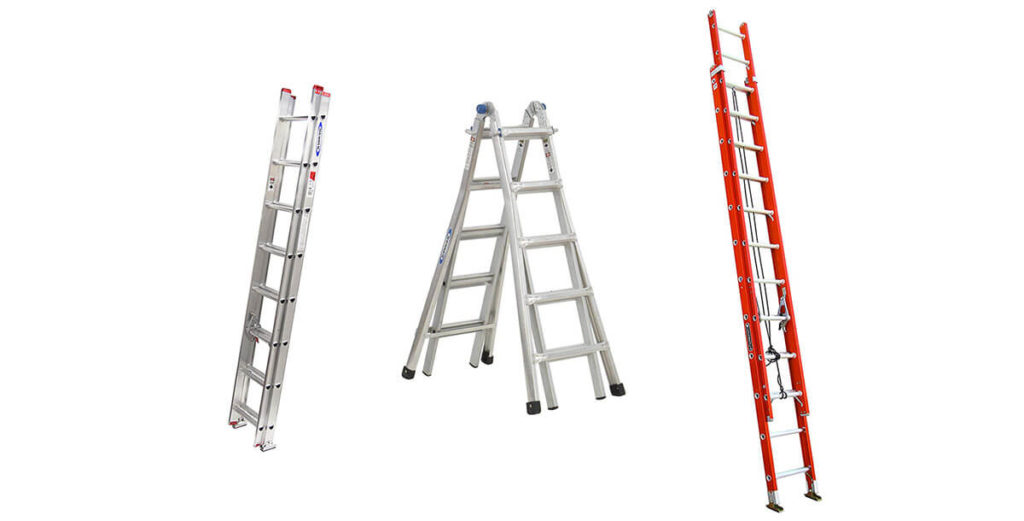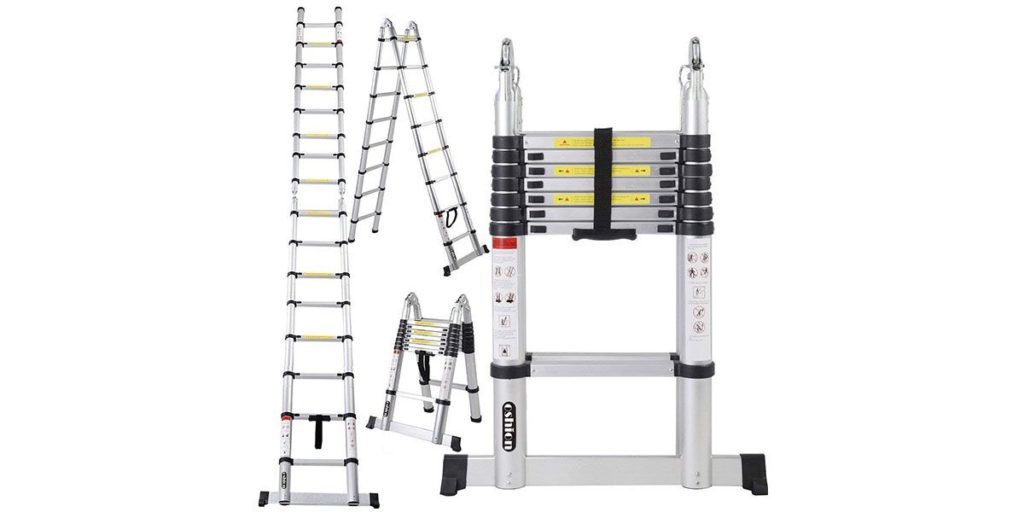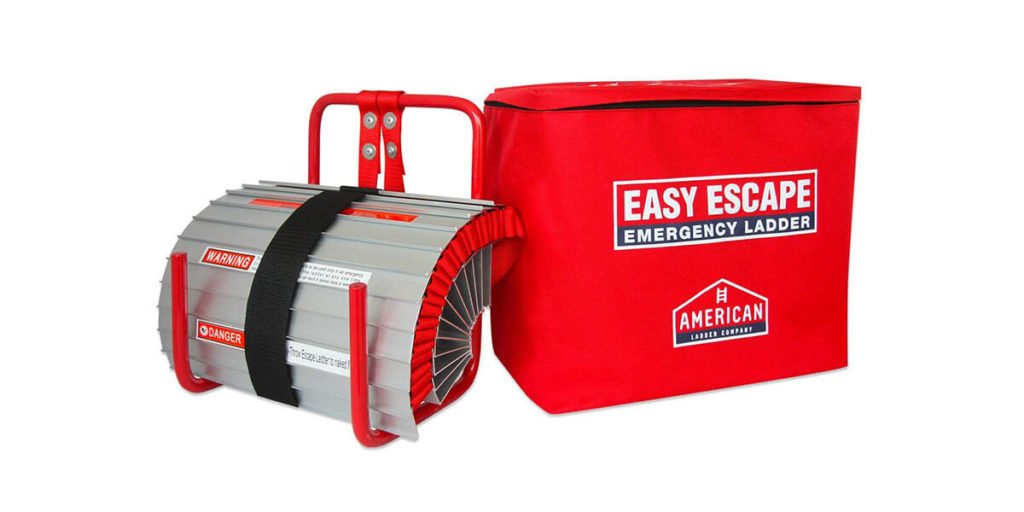Best Ladders
Suppose, on a typical day you are browsing through the internet for a ladder to paint your ceiling. You’re not paying much attention to the type of ladder and expecting it would work just fine. Only after using the ladder do you realize that the ladder is trembling and cannot even reach your ceiling! How would it feel? Pretty bad, right?
The multiplicity of ladders on the market today is both a blessing and a dilemma. We certainly do not want to spend our money on something we cannot even use. That’s why having some knowledge of various types of ladders is the first crucial step for any newbie ladder owner. Not every type of ladder is made to perform every kind of tasks. Each has specific features that make it perfect for its’ respective job.
Keeping this in mind, this article is designed to help you make the right decision on what to look for when buying a ladder. Also, as this site is focused on painting and tools related to painting: tools like the best ladder for painting. Any ladder that has four legs, can be used for painting. The step ladders are very stable and are mostly used for painting.
Ladder Types
The very first thing to consider before buying is what type of ladder do you actually need? This is the focal point of this article. As stated earlier, there are lots of options to choose from. It is possible that you get carried away and buy something which does not suit your preference. First, consider the range of height you wanna achieve through the ladder. Straight ladders can reach longer heights but they are too big and cannot be retracted. Extension ladders can be retracted but they are too large (more than 3ft) to store and transport.
Also, there is the concern of a ladder’s duty rating, which is the total weight a ladder is capable to take. Choose the duty rating type according to the task you wanna do with it. It is always wise to measure the physical space where you’re planning to use the ladder. If inside, measure your ceiling height; if outside, check if there are any large trees or crowd nearby.
However, the following are some of the main types of ladders available on the market:
Step Ladder
The most common and popular type of ladder is, of course, the step ladder. No matter how advanced we become, we always trust the traditional design of a stepped ladder. There are two basic types of step ladders. One is the front stepladder and the other is twin stepladder. Front ladders have only one climbable side and the other side is for resting the ladder against a wall or other surface. The twin ladder, on the other hand, has two climbable sides. Two people can easily use the ladder simultaneously.
Stepladders’ height range starts from 3ft; they are similar to step stools. Their average height range is between 5 to 9 feet. They can reach the maximum height of 20ft. Rungs are 12’’ to 14’’ wide and have 14’’ to 1ft increments.
Many stepladders have various features too. Like, every step is secured with spreader brace hinges. These bars prevent the ladder rungs from collapsing. They also come with working platforms at the top. It the top step of your ladder which is not designed to climb on. Along with the platform, you can get a pail shelf to hold your tools. Pail shelf sets behind the ladder and one rung down from your position.
The step ladders are mostly used for regular house maintenance, painting etc. Please read more about the best step ladder here.
Extension Ladder
Extension ladders are multipurpose ladders and they are expensive. Unless you live in a two or three-story building, then extension ladders will not do you any good. But, if you are looking for an extension ladder then you should know they are packed with more than 20 different features.
Extension ladders are composed of two parts: base and fly. The base is where the ladder shoe is. The extendable part is called fly. Some ladders have push-up buttons to extend the ladder while others have a rope and pulley system. The shape and construction of the rungs will determine the cost.
The best thing about extension ladders is their ease of use. They fold down to half of their actual size. However, like other ladders, you are not permitted to step on the last two rungs at the top while working. Also, one or two rungs are placed at the center of the base and fly. That also cuts off some usable rungs. So keep in mind that if you buy a 12ft ladder, you will get the use of a 10ft ladder.
Please read more about the best extension ladder here.
Telescoping Ladder
Telescoping ladders can slide inwards or outwards and like the extension ladders, they have two overlapping sections. In fact, extension ladders are also a type of telescoping ladder. Any ladder that can be retracted to reach the desired height and can be packed in a compact size is called a telescoping ladder.
Telesteps is such a company that manufactures some of the best telescoping ladders. They can reach a variety of heights ranging from 10.5 to 14.5ft. They are easy to store and portable ladders.
Their rungs are placed at 1ft increments. So, they extend according to the rung distance. Therefore, you can ‘adjust’ the height, not choose your exact desired height. That is why you should measure the distance and height you will be working with. Telesteps telescoping ladders provide a feature called ‘Airshock closing system’. Unlike the other extension ladders which are stored by collapsing the rungs, the Airshock allows you to squeeze the bottom of the ladder and it just folds down to half of its’ actual working height.
Telescoping ladders are the king of the multipurpose ladder. Be it indoors or outdoors, these ladders can be re-adjusted to meet any kind of job demand. They can be a little heavy on your pocket. But, as with other products, more quality means more money.
Read more about the best telescopic ladder here.
Fire Ladders
Fire ladders are literally your lifesaver in an emergency. Not every one of us lives in a one-story building and accidents can happen at any time. If you live in a two or two+ story house, it is smart to have a fire ladder at your disposal. Fire ladders are generally made from aluminum, steel, and nylon. They are designed to reach the heights of 13’ to 15’ (for two stories) and 20’ to 25’ (for three stories) building. When buying, see that your ladders’ weight capacity is minimum 1000lbs. Also, consider the length and design of your windowsill (if you’re buying a window escape ladder).
Another important thing is practice drills. Not every fire ladder is reusable but it is advised that you practice with your whole family before an actual accident. For extra safety, some fire ladders come with assistance strap, adjustable standoffs, and additional window hooks.
They can be portable/non-portable and built in. Portable ladder is easy to lug around while non-portable ones are quite heavy for that. Built-in ones save you a lot of time but they are a hassle if you’re switching houses frequently.
Read more about the best fire ladders here.
Platform Ladders
It is super troublesome to stand on the rungs while working for longer periods. That’s why you need a ladder that has a working platform built into it. These ladders resemble the warehouse ladders. Because they spring loaded wheels at the bottom.
 Most common material for platform ladders is aluminum but you can also find some more efficient, non-conductive fiberglass platform ladders too. The top step of these ladders is full-fledged platforms to stand on and have the OSHA standards of 300 to 375lbs. For easy balance, they have a bar at the top that works as a rail guard. The rail guard is set 2ft above the platform. This allows you to use your two hands while working.
Most common material for platform ladders is aluminum but you can also find some more efficient, non-conductive fiberglass platform ladders too. The top step of these ladders is full-fledged platforms to stand on and have the OSHA standards of 300 to 375lbs. For easy balance, they have a bar at the top that works as a rail guard. The rail guard is set 2ft above the platform. This allows you to use your two hands while working.
The wheels at the bottom only roll when you step outside the ladder and does not require brakes. Along with the casters, the ladders have a handrail to push the ladder around. The only problem with these ladders is that they cannot be extended or retracted. You have to use the size you bought. So be careful of that.
Many of the step ladders come with platforms. Here are of the best platform ladders:
- Flip-N-Lite 300-Pound Duty Rating 6-foot Stepladder
- COSCO Three Step Max Steel Work Platform
- Best Choice Products Shade 3 Step Ladder
- Louisville Ladder FS1506
Folding Ladders
 You guessed it right. Folding ladders are any ladders that can be folded for extremely easy storage. They are made with an ‘easy to carry and easy to store’ motto and are self-supporting. Meaning they can stand on their own and don’t need to lean against any wall. Most common materials used for them is aluminum, fiberglass and in some cases, steel.
You guessed it right. Folding ladders are any ladders that can be folded for extremely easy storage. They are made with an ‘easy to carry and easy to store’ motto and are self-supporting. Meaning they can stand on their own and don’t need to lean against any wall. Most common materials used for them is aluminum, fiberglass and in some cases, steel.
The folding ladders are ideal for small household jobs and minor commercial purposes. They can take up to 250lbs to 300lbs of weight. Their rungs are wider than usual ladders. This gives your extra comfort and support and works almost like a platform ladder. Their base is also broader than usual ladders. However, their load capacity depends on the quality of the material and the extra feature it has to offer.
Most of the step ladders, some telescoping ladder, and some extension ladders fold in the middle. Here are some of them:
- 26 1A Little Giant Ladder Classic Champ Bundle
- Cosco World’s Greatest Multi-Position Ladders
- Little Giant 14016 001 Alta Ladder
- Werner Telescoping Multi-ladder
Telescoping ladder that folds:
Multipurpose Ladders
 What if you get all the above-mentioned ladders in one ladder? This is the case with multipurpose ladders. They can be used as stepladders, extension ladders or work as a scaffold for your platform and planks. Buying different ladders for different applications are troublesome and costly.
What if you get all the above-mentioned ladders in one ladder? This is the case with multipurpose ladders. They can be used as stepladders, extension ladders or work as a scaffold for your platform and planks. Buying different ladders for different applications are troublesome and costly.
Multipurpose ladders offer you so many different positions and angle that you will fall in love with them. They are easy to store since they can be completely closed when not in use.
The first manufacturer of multipurpose ladders was the Little Giant company, but now many other manufacturers are launching their versions of the ladder. The durability and design of your ladder will depend on the cost and quality of your product. Otherwise, all the benefits are somewhat the same.
Here are some multipurpose ladders:
Oshion 16.5ft EN131 Aluminum Telescoping Telescopic Extension Ladder – a telescoping ladder that folds.
Werner Telescoping Multi-ladder – folding ladder that can be used as a scaffold.
Extension ladders that extend like the telescoping ladder.
Little Giant 14016 001 Alta Ladder
Cosco World’s Greatest Multi-Position Ladders
Step Stools
 The ladder with the most variety of materials is a step stool. They can be made from four main materials: plastic, wood, fiberglass, aluminum and classic steel. An average step stool is OSHA 200lbs weight certified and a heavy duty step stool can carry about 300lbs of weight.
The ladder with the most variety of materials is a step stool. They can be made from four main materials: plastic, wood, fiberglass, aluminum and classic steel. An average step stool is OSHA 200lbs weight certified and a heavy duty step stool can carry about 300lbs of weight.
 Step stools are like our family members. They are much-needed tools in pantry, kitchen or near your cupboard. The number of steps can vary from 1 to 4 steps and the steps are pretty wide. In case you slip, the steps are also slip-resistant and have traction tread finish.
Step stools are like our family members. They are much-needed tools in pantry, kitchen or near your cupboard. The number of steps can vary from 1 to 4 steps and the steps are pretty wide. In case you slip, the steps are also slip-resistant and have traction tread finish.
They are very easy to store and carry. You can tuck them under your bed, beside refrigerator or even in the bottom kitchen shelf. Some of them have folding mechanism which makes it a lot easier.
If you buy something more expensive, chances are that you’ll get a hand bar attached to hold while on the ladder and a utility tray attached to the bar.
Best Ladders Used for Painting
 Ladders are used for all sorts of daily activities ranging from reaching the top shelf of your walking wardrobe to fixing rooftop of your townhouse. In this site, we have mostly focused on home improvement products mainly tools related to painting. No ladder is built specifically for painting, but some are more suitable than others.
Ladders are used for all sorts of daily activities ranging from reaching the top shelf of your walking wardrobe to fixing rooftop of your townhouse. In this site, we have mostly focused on home improvement products mainly tools related to painting. No ladder is built specifically for painting, but some are more suitable than others.
Step Ladder for Painting
Most step ladders are best suited for this purpose as they are very stable on four legs and have a platform for the tools you might need for the painting job. The other advantage is that they don’t lean against the area of the wall that needs to be painted, requiring you to climb down and reposition. One disadvantage is that they are not very tall.
Other Ladders for Painting
This does not mean other types of ladders are not suitable for painting. Almost any ladder that can support your and the paint equipment weight is good for the job. It does not matter if it is extension, telescoping or folding ladder as long as it does not slip and strong enough to support your weight plus the paint equipment weight, it’s can be used for painting.
There are extension ladders that can reach as high as 36-40 feet and can take a load of up to 300 pounds and are very stable for painting your 4 story house.
- Louisville Ladder FE3224 Fiberglass Extension Ladder
- Werner D6224-2 300-Pound Duty Rating Fiberglass Flat D-Rung Extension Ladder
- Louisville Ladder AE2216 Aluminum Extension Ladder and more…
Read more on the extension ladder here, telescoping ladder here and on step ladder here.
Ladder Materials
The next thing you should consider when buying a ladder is, of course, its material. Half of your tasks’ success depends on what type of material you choose. There are FOUR main materials used in ladder manufacturing: aluminum, fiberglass, steel, and wood.
Aluminum
Probably the cheapest and the lightest ladders are made from aluminum. Although not very popular among the professional workers, aluminum ladders are every homeowner’s first choice. Why? As these ladders are lightweight, they are easy to store and lug around. Also, these ladders are the most extendable ladders, reaching more than 20 feet. However, it conducts electricity, making it incredibly risky for jobs that require electrical tools and wires. These ladders are more durable and more expensive than wooden ladders but it’s lightweight and versatility compensates for it. Cheap and lighter than the steel ones, these ladders are perfect for DIYs and almost any kind of household chores.
- Cheap, lightweight and longest reaching ladder
- Durable and in some cases, portable
- Because of its’ lightweight, the rungs may bend over time. The steps may also sag if not taken care of
- Conducts electricity which makes it impossible to be used in electrical works.
Fiberglass
The name ‘Fiberglass’ came from a process of combining silk with glass. In the 1930s, researchers made some innovative changes and used plastic instead of silk, but the material is still called fiberglass. Fiberglass can be reshaped and used in various structures such as aircraft, cable pipe, bathtub/ hot tub, water tanks, automobiles, etc. In 1940, however, fiberglass started to be used for ladder construction.
Fiberglass is known for its lightweight and amazing durability. It is heavier than aluminum ladders but lighter than steel and wooden ladders. But don’t be fooled by its’ lightweight. These fiberglass ladders are sometimes as strong as steel ladders. Although very expensive, these ladders are professionals’ favorite and perfect for heavy duty construction work. On the bright side, unlike with other types of ladders, you do not have to replace the ladder after 1 or 2 years of use. Most ladders last a workers’ entire lifetime! The very best thing about these ladders is its’ non-conductivity. These ladders are heat and electricity resistant. So they stay cool in summer and in room temperature in summer.
These ladders come into extendable models and reach up to 25 feet! If you are looking for a ladder which is perfect for both home and outside heavy construction work, then fiberglass ladders should be your first choice.
- Amazingly sturdy, lightweight and long-lasting ladder
- Non-conductive to electricity, making it the safest ladder for electrical works
- Rugged design and reaches a wide range of heights
- Expensive
- Heavier than aluminum ladders
Steel
When you are working with a ladder, it is very common to bump it here and there occasionally. With aluminum and fiberglass ladders, there is a slight chance of your ladder getting marred or even bent. That’s when you can rely on a traditional steel ladder. Steel is no new material. It has been used for many years now. Although a little heavy, steel is still known for its rigid structure and durability. However, these ladders are suitable for all kinds of purpose. Most common use of steel ladders includes Rolling Warehouse ladders.
Along with fiberglass, professionals also trust steel ladders while working in a warehouse. Because of its sturdy structure, the ladder can carry more weight than aluminum or even fiberglass. These are also OSHA certified and have weight capacities up to 300-600lbs. The only problem is that it is not suitable for indoor household chores or even simple DIYs. Setting and transporting the ladder is a mammoth’s task. Another downside is they are very prone to rust and electricity. These ladders only last as long as you keep them in good shape.
- Sturdy structure and design
- More durable compared to other types of ladders
- Excellent for heavy-duty construction work
- While used as warehouse ladder, these ladders have rolling wheels underneath. That makes it transportation a lot easier.
- Affordable ladder
- Heavy and hard to store
- Needs a lot of maintenance
- Becomes rusty while in contact with water
- Conducts electricity.
Wood
Another classic ladder material is wood. Two types of wood are used for ladder manufacturing- soft and hardwoods. Hardwoods include hickory, alder, oak and mahogany. And, soft ladders include pine, cedar, spruce etc. Most common material is hardwood because soft woods are not that much versatile. Two or three stepped wooden ladders are ideal for all kinds of household chores. They are lightweight compared to steel ladders. These ladders are easily adaptable. They go with any kind of flooring and home décor.
Since there are varieties among wooden ladder types, their durability depends on the type of ladder you choose. They are not at all weather friendly. If you keep them outside or store them in bad condition it will splinter and its’ hinges may also get bent. Therefore, they are super high maintenance. However, people still love to own a wooden stepladder because it is cheaper than most ladders and are ideal for small DIYs and other activities that do not require any hassle with ladders.
- Cheap, adaptable and durable
- Excellent for small household activities
- Easy to store and transport
- Not suitable for outside jobs
- Prone to rust and other damage
- High maintenance
Extra features
Apart from these, ladders also come with some extra features that increase its longevity and appeal. While purchasing a ladder, look for features such as:
- Nonslipping steps with Double Riveted Traction Tred steps
- Spring loaded locking mechanism so that your hands don’t jam
- Non-marring rubber (or any other material) feet
- For strength, look for Semi tubular steel rivets and
- Gusset bracing made of heavy duty steel
- And, of course, foldable compact design
- Some have extra storage and tool trays too.
Ladder Accessories
Do you know what’s the best thing about todays’ modern style ladders? They are packed with a lot of accessories. These accessories make the work a lot easier and sometimes increase your ladders’ outward beauty. As with the types of material, not all the accessories are useful or even required. Many buyers, unfortunately, don’t know what kind of accessories are out there. To help you make another informed decision, following are some accessories you might wanna check on:
Planks
Planks are both life and time saver. Imagine if every time you had to get up and down for something! Planks allow you to go back and forth while still on the ladder. Each type of plank has a different type of duty rating. Like, if you want a one-man ladder than the duty rating of the plank should be at least 250lbs. Likewise, if you want a two or three man ladder then duty rating should be 500lbs and 750lbs at least respectively. There four basic kinds of planks:
- Wood
Wooden planks are almost 40% lighter than aluminum ones. They are super comfy to stand on and gives you a better grip. Unlike a straight channeled aluminum plank, they are stiffer. The big issue with wooden planks is they are prone to damage. You may notice some splinters or cracks on the plank over time.
- Aluminum
Although little heavy, aluminum planks are durable, affordable planks. Unlike the wooden ones, aluminum planks don’t get splits or knotholes in them. They are good choice for outdoor use.
- Telescoping
The great thing about telescoping planks is: you can adjust its’ length according to your preference. They are mostly built with aluminum material. Since they can be retracted, they are super easy to store and transport. These ladders fold in half the size of their extended height. They can be a little pricey, but they are in demand for any modern household.
- Scaffolding
These ladders are strictly made for scaffolding. In case you don’t know, scaffolding is the process of making a temporary structure on which workers in a construction site can stand on and carry tools and other stuff. When you are working on a multi-story building, it is troublesome to carry a ladder everywhere. These scaffolding planks are normally made of wood, aluminum, and steel. You can buy a scaffolding plank inclusively or separately. But it’s safe to buy your scaffolding plank from the manufacturer of your ladder.
Ladder Platforms
By far, the most popular ladder accessory on the market is none other than a working platform. There are some strong reasons for that. If you keep standing on the rung for a long period, your feet will get sore and sometimes can cause major injuries. Whether you do heavy work or small household chores, it is advisable that you always look for an additional working platform. These platforms can be adjusted at your desired position. Look for platforms that have duty ratings of 300lbs. Again, your platform should be compatible with the type and model of your ladder.
Platforms allow you to use your two hands while working. This ensures extra safety if you’re planning on painting your ceiling, fixing the roof or even changing the bulb.
Ladder Levelers
Another great safety tool is a ladder leveler a.k.a. leg leveler a.k.a. ladder stabilizer. The most annoying and common problem while using ladders is its’ wobbliness due to the uneven surface. It’s not a chair feet you can level with a piece of wood. Climbing up to 4 feet on an uneven ladder can cause serious damage to you. Generally, fiberglass and aluminum levelers are used for stepped and extension ladders. They are about 8 to 15 inches in height. Every manufacturer has their own type of ladder leveler. It’s best to buy the leveler from the same manufacturer of the actual ladder.
In case of the wooden ladder, by the way, you have to add some hardware screws before attaching the leveler.
Ladder Standoff
It may seem luxurious to own a ladder scaffold. But, they are worth the trouble as scaffolds can be used for multiple purposes. Moreover, it is specially made for multipurpose extension ladders. There are two types of scaffolds: fixed and adjustable. Fixed ladder are of the same length and cannot be retracted whereas adjustable ones can be retracted to different depths. There is also some special kind of ladders for corners and roof.
Each scaffold has two wide tubular shaped arms with skid-proof rubber caps at the bottom. If you need to clean your gutters, fix a roof or do any job that requires both of your hands, then scaffold is a must. Most importantly, scaffold gives the climber confidence. When you know you are safe, you can work easily, efficiently and in no time. Like other accessories, try to buy the scaffold from the same manufacturer.
Ladder Jacks
If you really think using a ladder scaffold is hazardous but still want the benefits of it, then try settling for ladder jacks. Ladder jack is a structure that allows a removable plank to be placed on it. It is just like scaffolding. You can use the jacks to set planks on one ladder or multiple ladders placed side by side. This tool does not allow a lot of work to set up, unlike the real ladder scaffold. It is very easy to set up and is made of hard aluminum. You can you telescopic or other types of planks on it. It is lightweight and portable. No more climbing up and down. You can just walk on the plank and reach multiple places at once. Most ladders are adjustable and are cost effective too.
Ladder Racks
Carrying your toolbox to the construction site or working area is one thing and carrying your 10’ tall extension ladder is another. Not only are carrying ladders hazardous, but they can also be injurious. Ladder racks spare you this trouble. They hold your ladder for you when you’re transporting it. Most common materials used in ladder racks are aluminum and steel. Aluminum is preferred choice for racks as it is lightweight compared to steel ones. Also, with steel racks, you have to deal with rust and other damages. On the other hand, aluminum racks can withstand heavy work abuses. Steel racks are very high maintenance compared to the aluminum one.
Ladder racks can be bolted to truck or can be re-adjustable. You can also find three types of ladder racks: set in one side of the vehicle and carrying one ladder, attached to front and back and carrying two ladders and at the top of your van.
Using Ladders
Your responsibility does not end with just buying a ladder. A ladder will give you its’ best service only if you take proper care of the ladder and yourself when using it. Following are some of the things you should and should not do with your ladder:
Things You Should Do:
- Always look for defects before purchasing any ladder. See if the ladder is clean, does not have any dent, bent or is not broken.
- Buy a ladder that is newly made and avoid using temporarily fixed or older versions of the ladder
- While on the ladder, always keep your body position centered, your face looking up and hands on the rail
- Climb and come down slowly
- Keep your ladder dry and clean
Things You Should Not Do:
- Do not overreach for anything. Instead climb down and adjust your height and position. Overreaching can cause damage and injury.
- Do not store the ladder near sunlight or children. Children can get hurt and sunlight can expand your ladder made of steel or plastic. Use ladder racks instead.
- Do not overload the ladder
Conclusion
Ladders are our friends. They save us extra trouble, money and some time. Purchasing the right ladder can be a tricky decision. There are a plethora of options, but not everything is right for you. If you are frequently using a ladder we would recommend a multipurpose or an extension ladder. But if you’re using the ladder once a year or a month, then extensions will be a waste. Calculate carefully before you purchase. Hopefully, this article will help you make the best decision. Good luck.

